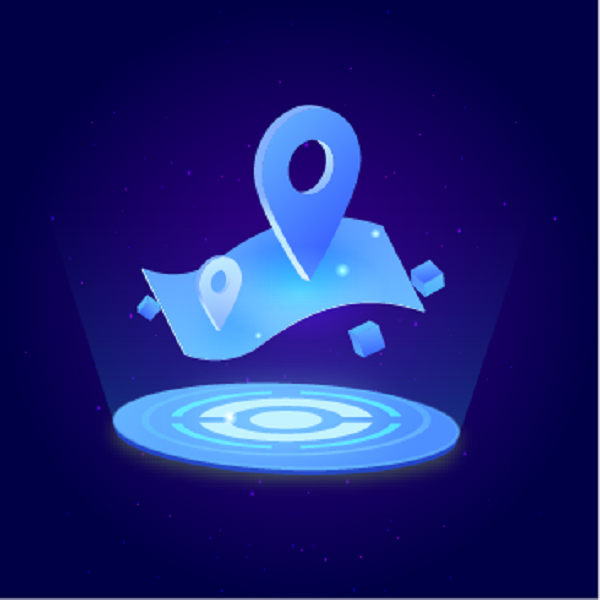Residential Proxies
Allowlisted 200M+ IPs from real ISP. Managed/obtained proxies via dashboard.

Proxies
Residential Proxies
Allowlisted 200M+ IPs from real ISP. Managed/obtained proxies via dashboard.
Residential (Socks5) Proxies
Over 200 million real IPs in 190+ locations,
Unlimited Residential Proxies
Use stable, fast, and furious 700K+ datacenter IPs worldwide.
Static Residential proxies
Long-lasting dedicated proxy, non-rotating residential proxy
Dedicated Datacenter Proxies
Use stable, fast, and furious 700K+ datacenter IPs worldwide.

Web Unblocker
View content as a real user with the help of ABC proxy's dynamic fingerprinting technology.
Proxies
API
Proxy list is generated through an API link and applied to compatible programs after whitelist IP authorization
User+Pass Auth
Create credential freely and use rotating proxies on any device or software without allowlisting IP
Proxy Manager
Manage all proxies using APM interface

Proxies
Residential Proxies
Allowlisted 200M+ IPs from real ISP. Managed/obtained proxies via dashboard.
Starts from
$0.77/ GB
Residential (Socks5) Proxies
Over 200 million real IPs in 190+ locations,
Starts from
$0.045/ IP
Unlimited Residential Proxies
Use stable, fast, and furious 700K+ datacenter IPs worldwide.
Starts from
$79/ Day
Rotating ISP Proxies
ABCProxy's Rotating ISP Proxies guarantee long session time.
Starts from
$0.77/ GB
Static Residential proxies
Long-lasting dedicated proxy, non-rotating residential proxy
Starts from
$5/MONTH
Dedicated Datacenter Proxies
Use stable, fast, and furious 700K+ datacenter IPs worldwide.
Starts from
$4.5/MONTH
Knowledge Base
English
繁體中文
Русский
Indonesia
Português
Español
بالعربية


This article explores the relationship between data and potential customer acquisition, analyzes how to optimize customer reach through efficient data collection technology, and introduces the key role of proxy IP technology in this process.
Definition and Relationship of Data and Lead Acquisition
Data is the cornerstone of business decision-making in modern society, covering multi-dimensional information such as user behavior, market demand, and industry trends. Lead generation is the process of accurately identifying and reaching target user groups and converting them into business opportunities. The combination of the two means that companies can design more efficient customer contact paths based on structured data, while at the same time feeding back data optimization through customer feedback to form a positive cycle. In this process, the quality of data collection directly affects the efficiency of potential customer acquisition, and proxy IP technology (such as the service provided by abcproxy) provides infrastructure support for large-scale, compliant data collection.
The core role of data: from insight to action
Data plays a dual role in potential customer acquisition. On the one hand, historical data can be used to build user portraits and predict the needs and preferences of target groups. For example, e-commerce platforms analyze user browsing history and purchasing behavior to locate high-value customers and push personalized ads. On the other hand, real-time data can dynamically adjust marketing strategies. On social media platforms, brands can quickly respond to trends by monitoring topic popularity and design targeted content to attract potential customers.
The value of data lies not only in its volume, but also in its dimension and timeliness. Cross-validation of multi-source data (such as geographic location, device type, and access frequency) can help companies filter invalid traffic and reduce customer acquisition costs. The ability to process real-time data determines whether a company can seize the initiative in a highly competitive market.
Key technical elements of lead acquisition
1. Accurate positioning and dynamic screening
Identification of potential customers requires a combination of static attributes (such as industry, company size) and dynamic behaviors (such as recent search keywords, page dwell time). By setting dynamic thresholds, companies can automatically filter out qualified high-intent users to avoid wasting resources.
2. Optimized combination of reach channels
The reach efficiency of different channels varies significantly. For example, email is suitable for delivering in-depth information, while social media ads are better at attracting attention quickly. By comparing the conversion rates of different channels through A/B testing, companies can optimize budget allocation.
3. Balancing compliance and user experience
Excessively frequent access may cause user disgust and even trigger the platform's risk control mechanism. Proxy IP technology can help companies simulate real user behavior in this link. For example, decentralized access can be achieved through residential proxy IPs (such as abcproxy's static ISP proxy) to avoid data collection interruptions caused by IP blocking.
Integration of data technology into customer acquisition process
Data Collection Layer
Large-scale data collection relies on stable infrastructure. For example, in social media marketing, companies need to crawl public data from multiple platforms to analyze user interests. Using data center proxy IPs can ensure the stability of high concurrent requests, while residential proxy IPs are suitable for scenarios where you need to simulate the real user's geographic location.
Data processing layer
Raw data must be cleaned, deduplicated, and classified before it can be used for analysis. Automated tools can identify invalid data (such as duplicate form submissions) and extract key information (such as sentiment in user comments) through natural language processing technology.
Application Layer
The data must eventually be converted into executable strategies. For example, optimizing the landing page design based on the user access path, or adjusting the advertising bidding strategy based on historical conversion data. The technical core of this stage is to seamlessly embed the data analysis results into the company's existing workflow.
Challenges and Countermeasures for Building an Efficient Data-Driven Customer Acquisition System
Data fragmentation
Enterprises often face data silos, such as the inability of CRM systems and advertising platforms to communicate with each other. Integrating multi-source data through API interfaces and establishing a unified data warehouse can improve analysis efficiency.
Technical barriers and costs
Building your own data collection and processing system requires high R&D investment. Using third-party tools (such as abcproxy's proxy IP service) can quickly build infrastructure while reducing operation and maintenance costs.
Future trends: intelligence and automation
The popularity of machine learning technology will further improve the synergy between data and customer acquisition. For example, predictive models can automatically identify high-potential customers and adjust contact strategies in real time. In addition, automated tools (such as chatbots) can provide instant responses based on user interaction data, shortening the conversion path.
As a professional proxy IP service provider, abcproxy provides a variety of high-quality proxy IP products, including residential proxy, data center proxy, static ISP proxy, Socks5 proxy, unlimited residential proxy, suitable for a variety of application scenarios. If you are looking for a reliable proxy IP service, welcome to visit the abcproxy official website for more details.
Featured Posts
Popular Products
Residential Proxies
Allowlisted 200M+ IPs from real ISP. Managed/obtained proxies via dashboard.
Residential (Socks5) Proxies
Over 200 million real IPs in 190+ locations,
Unlimited Residential Proxies
Use stable, fast, and furious 700K+ datacenter IPs worldwide.
Rotating ISP Proxies
ABCProxy's Rotating ISP Proxies guarantee long session time.
Residential (Socks5) Proxies
Long-lasting dedicated proxy, non-rotating residential proxy
Dedicated Datacenter Proxies
Use stable, fast, and furious 700K+ datacenter IPs worldwide.
Web Unblocker
View content as a real user with the help of ABC proxy's dynamic fingerprinting technology.
Related articles

Free and Fast Proxy: Can You Really Have Both
Explore the balance between free and fast proxy services, and learn how abcproxy delivers high-speed, reliable proxy solutions for diverse needs.

How to efficiently parse HTML table data with Python
This article explains in detail the core methods of Python parsing HTML tables, explores practical techniques for efficient data extraction, analyzes the key role of proxy IP services in web page collection, and recommends abcproxy professional proxy IP solution.